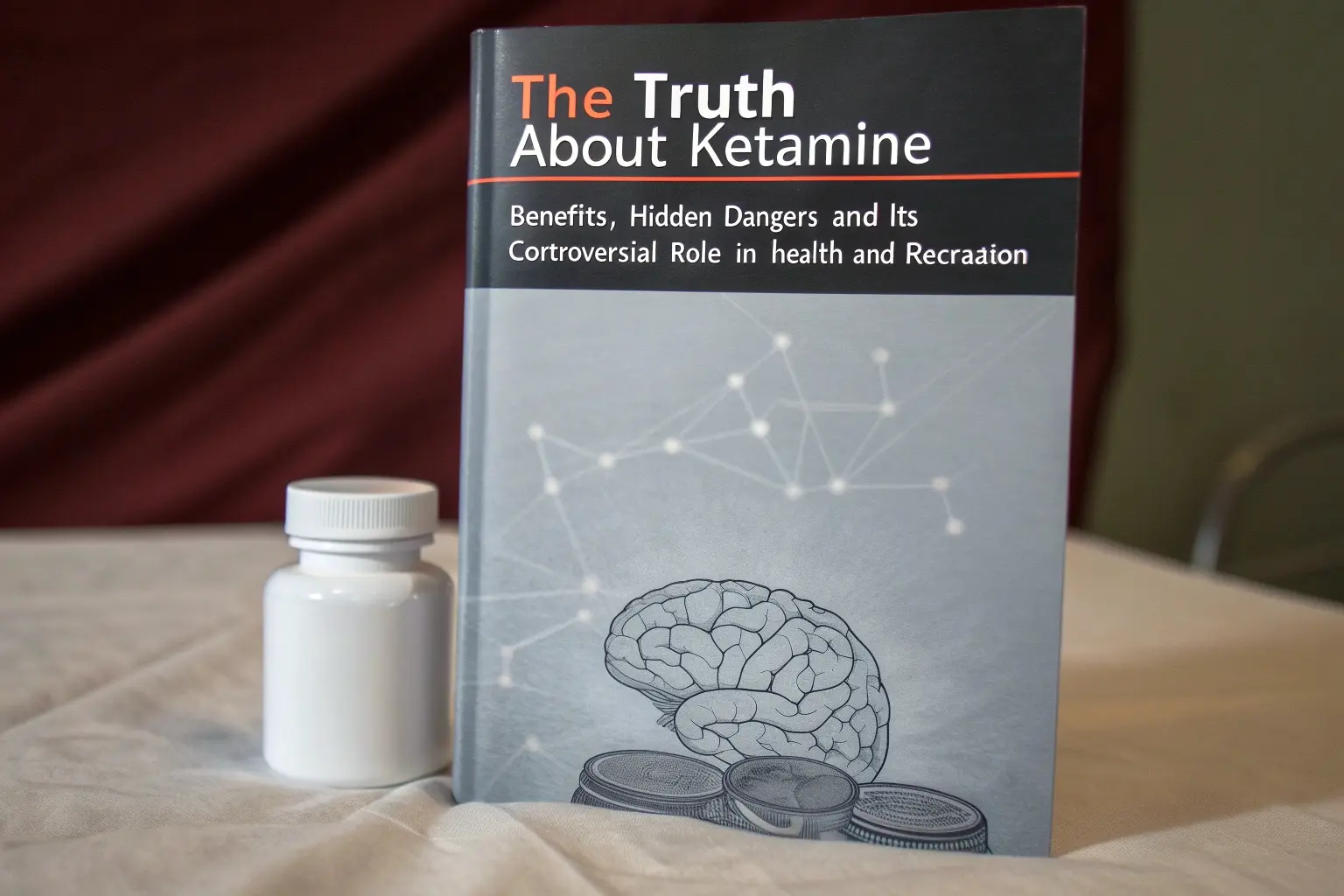Living in the Shadows: Unmasking the Silent Reality of Crohn’s Disease
“You don’t look sick.”Four words that echo in the minds of millions living with Crohn’s disease — a chronic, invisible, and often misunderstood autoimmune condition that attacks the digestive tract

“You don’t look sick.”
Four words that echo in the minds of millions living with Crohn’s disease — a chronic, invisible, and often misunderstood autoimmune condition that attacks the digestive tract with an unpredictable vengeance.
For 27-year-old Amanda Taylor, those words sting more than any of her hospital stays or flare-ups. Diagnosed at just 15, Amanda’s journey has been one of resilience, misinformation, trial and error, and moments of crushing invisibility in a world that struggles to grasp what it can’t see.
“I missed prom because I was in the hospital. I lost friends who thought I was being dramatic. Crohn’s doesn’t just affect your body—it isolates your soul,” Amanda says.
But she’s not alone.
Crohn’s disease affects an estimated 3 million people in the U.S. alone, and many more globally. Yet, the real number may be higher, as many remain undiagnosed for years. Misdiagnosis is common, as symptoms can mimic other gastrointestinal disorders like irritable bowel syndrome (IBS) or celiac disease.
What Exactly Is Crohn’s Disease?
Crohn’s disease is a type of inflammatory bowel disease (IBD) that causes chronic inflammation in the gastrointestinal (GI) tract. While it can affect any part of the digestive system from mouth to anus, it most commonly impacts the end of the small intestine (ileum) and the beginning of the colon.
The exact cause remains unknown, but research suggests a combination of genetics, an overactive immune response, and environmental triggers.
- It’s not contagious.
- It’s not caused by stress or poor diet.
- And it has no known cure.

Crohn’s Symptoms: More than Just “Stomach Aches”
Crohn’s symptoms can manifest in a wide range, including:
- Abdominal pain and cramping
- Severe diarrhea
- Fatigue and low energy
- Unintended weight loss
- Rectal bleeding
- Anemia
- Joint pain and eye inflammation
- Skin rashes
What’s more, the disease can fluctuate. Patients may experience flare-ups, periods of intense symptoms, followed by remission, where symptoms ease or disappear. This unpredictability can deeply disrupt personal relationships, careers, and daily routines.
Let’s Start Reading About: Let’s Talk About Poop: The Honest Guide to Knowing If Yours Is Healthy
Crohn’s Diagnosis: A Long and Winding Road
Most people with Crohn’s go through years of misdiagnosis or dismissals. Crohn’s symptoms can be vague or mimic more benign conditions, leading some physicians to brush them off as dietary issues or stress-induced.
Diagnosis typically involves:
- Blood tests (to check for inflammation or anemia)
- Stool tests (to rule out infections)
- Colonoscopy or endoscopy (to view inflammation directly)
- Imaging scans like CT or MRI enterography
There is no single test that definitively diagnoses Crohn’s, making the diagnostic process emotionally and physically exhausting for many.
Treatment: Managing the Unmanageable
Although there’s no cure, Crohn’s can be managed through:
- Medications like corticosteroids, immunomodulators, and biologics
- Dietary modifications, though no universal “Crohn’s diet” exists
- Surgery to remove damaged sections of the intestine (in severe cases)
- Lifestyle changes and stress management
Biologic therapies—genetically engineered proteins that target specific parts of the immune system—have become a game-changer for many. However, they come with a cost—both financially and in terms of side effects.
Who’s Most Affected by Crohn’s Disease? Racial and Age Disparities
While Crohn’s disease can affect anyone, it doesn’t do so equally. Growing research reveals that certain age groups and racial demographics bear the brunt of this chronic illness in unique and often overlooked ways.
Age Groups Most Affected
Crohn’s disease is typically diagnosed between the ages of 15 and 35, with a second smaller peak sometimes seen in people over 60. However, more recent studies are uncovering increasing cases in children and even infants — a troubling trend that suggests earlier environmental or genetic triggers may be at play.
- Teens and young adults (15–35): This is the most common age range for first-time diagnosis. Many young people in this group are navigating school, college, or early careers — and Crohn’s can severely disrupt life plans, education, and social development.
- Pediatric Crohn’s (under 18): Pediatric cases are rising, and children with Crohn’s often face growth delays, malnutrition, and emotional trauma from frequent hospitalizations or social isolation.
- Older adults (60+): While less common, older adults may experience more complications due to coexisting health conditions. Unfortunately, symptoms in this age group are often mistaken for other age-related GI issues, causing delays in diagnosis and treatment.
Racial Disparities in Crohn’s Disease
Historically, Crohn’s disease was considered a condition that primarily affected white populations of European descent, particularly those of Ashkenazi Jewish heritage — who are genetically more predisposed. However, newer research reveals a much more complex and evolving racial landscape.
Black Americans
- The prevalence of Crohn’s among Black Americans is rising, yet this population remains underrepresented in research and underserved in care.
- Studies suggest Black patients are often diagnosed later, receive less aggressive treatment, and are less likely to be referred to gastroenterologists, which can worsen long-term outcomes.
- Some Black patients report experiencing medical bias or dismissal of their symptoms, contributing to misdiagnosis or undertreatment.
Latinx and Hispanic Communities
- There’s a growing awareness of Crohn’s in Latinx populations, particularly among younger second-generation individuals in urban areas.
- Like Black patients, language barriers, socioeconomic status, and limited access to specialized care can significantly delay diagnosis and increase complications.
- Cultural stigmas around discussing GI issues may also lead some to suffer silently, delaying the pursuit of medical attention.
Asian and Indigenous Populations
- Crohn’s has traditionally been rare in East and Southeast Asian countries, but urbanization, westernized diets, and industrial pollutants are leading to rising cases — especially in China, South Korea, and India.
- Indigenous communities are under-researched, but early studies suggest increased risk due to environmental exposure, dietary shifts, and lack of access to specialist care.
White Populations
- Though still the largest group diagnosed in North America and Europe, white populations—especially those of Ashkenazi Jewish ancestry—have the longest-documented history of Crohn’s, which has skewed much of the historical research and shaped initial assumptions about the disease.
Why These Disparities Matter
Medical research, awareness campaigns, and treatment protocols have long been centered around white, middle-class patients. This means:
- Minority patients often experience longer diagnostic delays
- Fewer clinical trials focus on racial differences in disease behavior
- Cultural competency in Crohn’s care is still lacking
- Insurance status and location dramatically influence access to top-tier treatment like biologics
These disparities are not just statistical—they’re life-altering.
We can’t move toward equitable care until Crohn’s is recognized as not just a white disease, but a condition affecting people of all races, ages, and backgrounds.
Mental Health: The Unspoken Battle
Crohn’s doesn’t just live in the gut. It lives in the mind, too.
Depression and anxiety are disproportionately high among Crohn’s patients. Constant fatigue, body image issues from weight loss or surgery scars, and the fear of public flare-ups contribute to a significant psychological burden.
Amanda recalls cancelling a date because she didn’t want to explain her ileostomy bag. “It’s like your body betrays you, and then your mind follows.”
Mental health support—through therapy, support groups, or medication—is a crucial, yet often neglected, aspect of comprehensive Crohn’s care.
Stigma of Crohn’s Disease, Shame, and the Need for Awareness
Why is Crohn’s still so misunderstood?
Perhaps because it deals with subjects that society finds uncomfortable: digestion, bowels, and chronic illness. There’s also a visible/invisible duality—patients can look completely fine while suffering internally.
This stigma fuels silence. And silence fuels ignorance.
Raising awareness is not just about facts. It’s about humanizing the experience. Sharing stories like Amanda’s shifts the narrative from statistics to empathy.
The Questions That Still Need Answers
Despite growing awareness, the Crohn’s community still waits for answers:
- What causes Crohn’s?
- Why are cases rising, especially in young people?
- Will there ever be a cure?
- How can healthcare systems better support invisible illnesses?
- Why are minority and low-income patients less likely to be properly diagnosed and treated?
As we look toward a future of precision medicine and greater awareness, we must also commit to asking—and answering—these tough questions.
Some Thoughts
Living with Crohn’s is not a choice. How we treat people who do, is.
From policy change to better education for healthcare professionals, to inclusive public conversations—every step matters.
Amanda sums it up: “I don’t want pity. I want understanding. I want to stop hiding.”
So let’s stop asking if people look sick. Let’s start listening when they say they are.
FAQs
1. What is Crohn’s disease?
Crohn’s disease is a type of inflammatory bowel disease (IBD) that causes chronic inflammation in the digestive tract. It can affect any part of the gastrointestinal system — most often the small intestine and colon — and leads to symptoms like abdominal pain, diarrhea, fatigue, and weight loss.
2. What causes Crohn’s disease?
The exact cause of Crohn’s disease isn’t fully understood. Experts believe it results from a combination of genetics, an overactive immune response, and environmental triggers such as diet, stress, or infections. It’s important to note that Crohn’s is not contagious and not caused by poor diet or stress alone.
3. What are the common symptoms of Crohn’s disease?
Crohn’s symptoms can vary from person to person but often include:
- Abdominal pain and cramping
- Severe diarrhea
- Fatigue
- Weight loss
- Rectal bleeding
- Joint pain and eye inflammation
- Skin rashes
Crohn’s symptoms can come and go, with alternating flare-ups and remission periods.








